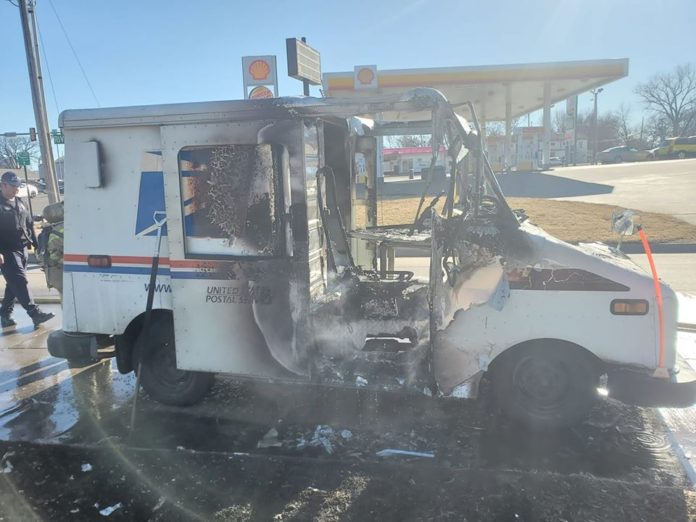Yet another USPS Postal LLV delivery truck has caught fire and burned, like hundreds of others, this one in Junction City, Kansas (in early Jan. 2020). This makes at least four in the last month that have burned. HUNDREDS of the delivery trucks have burned in similar fashion. Incredibly there have been only a few injuries as mail carriers are usually able to easily exit the vehicle, or the vehicles burn when when the carrier is away from the vehicle.
The Postal Service especially, and several postal labor unions, have kept relatively quiet about this most egregious safety issue. In the car industry, recalls are numerous, even for relatively minor safety issues. Yet the safety issue for these postal trucks continue. The Postal Service, to its credit, is purchasing new Promaster delivery vehicles and sending the newer FFVs to replace the older LLVs that are prone to burning. Yet, the LLVs are continuing to be used, and they continue to burn, putting both the public and the Postal Service at risk. Money is a factor, because there are apparently insufficient funds to fully purchase new vehicles that the Postal Service desperately needs to replace.
The prefunding mandate, where the Postal Service has to prefund retirement accounts for employees, is partly responsible for the financial shortfall. However, there is a much larger issue that is not being addressed, and that is of pricing of postal products and services. Currently, there is a complex process, overseen by the Postal Regulatory Commission (PRC) and influenced by various political and lobbying groups, that determine the pricing. The term used to determine the costs, and pricing, is attributable costs. Attributable costs are the prices determined for certain services, for example how much does it cost for the Postal Service to handle a one pound package traveling from New York to Chicago via Priority Mail. Let’s say the PRC determines that it cost the Postal Service $3 in total costs to handle and deliver that package once all the factors are calculated (to include Window services, transportation, fuel costs, sorting, wages, delivery etc.). As a result, the price of Priority Mail for a one pound package from New York to Chicago is set at $3. (This is just a rudimentary and oversimplification example of how prices are set, but the principle remains.) HOWEVER, replacement costs are apparently not factored into the attributable costs (in this case the costs of buying new vehicles). Organization-wide, replacement costs for new buildings. equipment, etc. are not attributed. The Postal Service only receives approval for pricing attributable for that one transaction between New York and Chicago, but nothing for replacing the buildings, equipment and vehicles that will ultimately be needed in the future for ongoing operations. (“Institutional costs” are also factored in, but however the subject is framed, there are not enough funds available for replacement costs, bottom line.)
For the Postal Service to remain a vital and ongoing organization, replacement costs must be attributed as well. Perhaps that would mean the price of a first class stamp would rise another five cents, or perhaps even 20 cents or more, but replacement costs (for building, equipment, vehicles, planes and the entire nine yards) must be factored in. As it stands now, there is an emergency situation where postal vehicles are burning by the dozens, and not enough is being done about it. The issue of burning vehicles needs to see the better light of day to be fully resolved, and for the greater benefit of the Postal Service.

